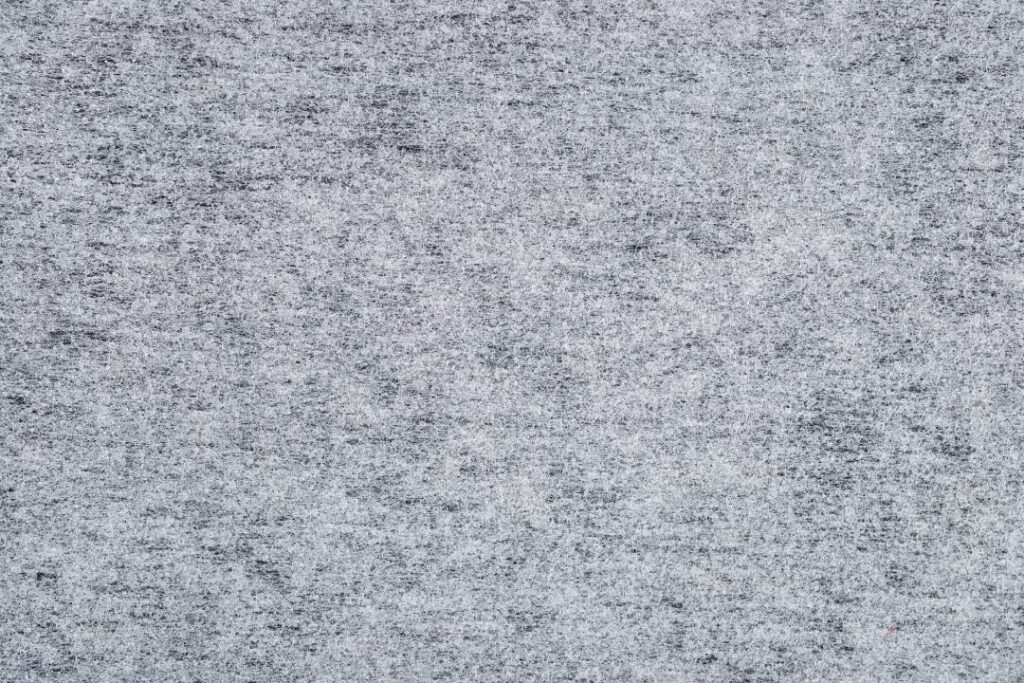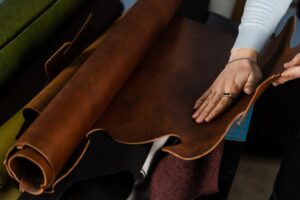When choosing textiles, the debate between ‘woven vs non-woven fabric’ often comes up, presenting a vital decision point for designers, manufacturers, and consumers alike.
Through this article, we aim to provide a comprehensive overview of woven and non-woven fabrics, highlighting their differences and benefits.
By equipping readers with this knowledge, we endeavour to facilitate informed choices in textile selection, ensuring the chosen material best suits the intended purpose and desired outcome.
What is Woven Fabric?

Woven fabric is a traditional textile created by interweaving two or more sets of yarn or threads at right angles on a loom.
This age-old technique produces fabrics with distinct qualities based on the type of weave, including:
Plain Weave: The simplest and most common form, characterised by a basic over-under pattern. This weave offers a balanced and sturdy fabric, ideal for various applications.
Twill Weave: Recognisable by its diagonal lines, twill weave provides a durable fabric with a distinctive appearance, often used in denim and gabardine.
Satin Weave: Known for its smooth and glossy surface, satin weave produces luxurious fabrics that drape beautifully, commonly used in formal attire and linens.
Examples of woven fabrics are diverse, ranging from denim and flannel to canvas and muslin, each chosen for specific applications due to their unique attributes.
What are the Benefits of Woven Fabric

1. Durability
The interlocking nature of the threads in a woven fabric provides a strong and durable structure that is resistant to tearing.
2. Breathability & Warmth
The weaving process allows for small gaps between the threads, facilitating air circulation. This breathability makes woven fabrics comfortable to wear in warmer climates.
Additionally, woven fabrics can trap heat, making them suitable for cooler temperatures and offering versatility across different seasons.
3. Customisability
The weaving process allows for immense creativity and variation, enabling the production of fabrics with diverse patterns, textures, colours, and finishes.
This customisability ensures that woven fabrics can meet specific aesthetic and functional requirements.
4. Versatility
The application of woven fabrics extends far beyond clothing. They are popular in home furnishings, including upholstery, curtains, bedding, and industrial products.
Read More: Comparing Tarpaulin vs Canvas in Malaysia: Pros & Cons
What is Non-Woven Fabric?

Non-woven fabrics represent a modern evolution in textile manufacturing, where fibres are bonded through mechanical, chemical, or thermal processes without weaving.
This category includes materials like interfacing, fleece, and synthetic leathers, which are pivotal in industries beyond fashion, such as healthcare and construction.
What’s more, the production of non-woven fabrics can involve several different techniques, each contributing to the fabric’s final characteristics:
1. Spunbond Process
In this method, continuous filaments of thermoplastic materials are extruded and stretched before being laid down onto a conveyor belt.
The filaments are then bonded—either thermally or through chemical means—to form a strong, resilient fabric.
2. Meltblown Process
This technique involves melting polymer resins and extruding them through fine nozzles to create microfibers.
These tiny fibres are collected on a conveyor belt, where they bond upon cooling, resulting in a fabric with a fine, cloth-like texture.
3. Needle Punching
This mechanical method uses barbed needles to entangle fibres, creating a dense fabric.
Needle punching provides strength and durability to the fabric, making it suitable for applications requiring robust material.
4. Chemical Bonding
In this process, fibres are combined using adhesives or chemical agents. Chemical bonding allows for the production of non-woven fabrics with specific properties, such as increased strength or water resistance.
What are the Benefits of Non-Woven Fabric

1. Cost-Effectiveness
Non-woven fabrics are more economical to produce than woven or knitted fabrics.
Their streamlined manufacturing processes require fewer steps and can utilise a variety of fibre materials, including cost-effective synthetics.
2. Wide Range of Uses
Thanks to their versatile manufacturing processes and customisable properties, non-woven fabrics are employed in diverse industries.
They are crucial in medical applications such as surgical gowns and masks, hygiene products like diapers, agricultural covers, automotive linings, and construction materials, among others.
3. Breathability
Many non-woven fabrics allow air to pass through, a crucial feature for comfort in wearable items and hygiene products.
4. Eco-Friendliness
The non-woven fabric industry has made significant strides in sustainability, with many fabrics now made from recycled or biodegradable materials.
This eco-friendly approach reduces waste and environmental impact, aligning with global efforts towards sustainability.
Read More: Sofa Fabric & Its Importance in Interior Design Malaysia
Woven vs Non-Woven Fabric: How to Differentiate Them
Distinguishing between woven and non-woven fabrics can be essential for selecting the right material for your project.
While both types of fabrics have their unique set of characteristics and uses, knowing how to tell them apart can be incredibly useful.
Here are some key differences to help identify woven and non-woven fabrics:
1. Visual Inspection
Woven fabrics display a grid-like pattern formed by the interlacing of warp (lengthwise) and weft (crosswise) threads.
In contrast, non-woven fabrics lack this structured appearance, often showing a more random arrangement of fibres.
2. Texture
Woven fabrics typically have a textured surface on one side and a smoother surface on the other
Additionally, where when you run your fingers over a woven fabric, you can usually feel the raised areas where the warp and weft threads cross.
Non-woven fabrics, however maintain a consistent texture throughout, which may be fibrous or smooth.
3. Flexibility
Woven fabrics generally offer greater flexibility in all directions, contrasted with the more rigid or less pliable nature of many non-woven fabrics.
Read More: Upholstery in Interior Design: Elevating Spaces & More
Improve Your Space with Kintex’s Premier Fabric Collections
In summary, when we talk about ‘woven vs non-woven fabric’, it’s not just about picking one over the other; it’s about choosing the right fabric for your needs.
As technology improves, both types of fabrics are improving too, offering more options for everyone.
Ready to enhance your projects with the right fabric? Kintex is a trusted upholstery fabric supplier in Malaysia with an extensive range of quality fabrics designed to meet your every need.
Explore our upholstery and non-woven fabric collection for a variety of textures, colours, and patterns that will transform any space.







